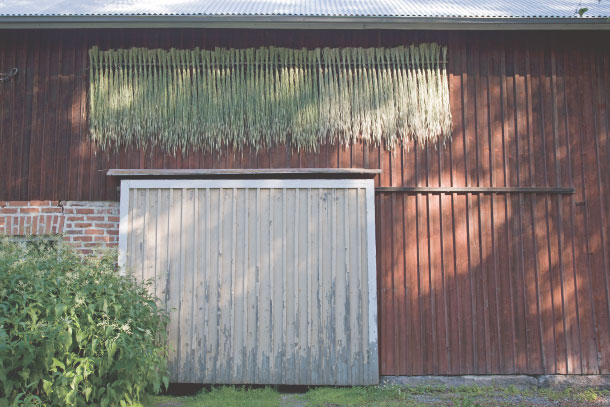
エイヤ・コスキ プロフィール
エイヤ・コスキは、 経済学者としてのキャリアを捨て ヒンメリの制作に エネルギーを注ぐことを決意、ヒンメリの技術を次世代に伝承したいと、 世界中でワークショップを開き、多くの展覧会でも作品を紹介。フィンランドの西海岸ヴァーサ の近くの農場に暮らし、無農薬のライ麦を育てている。収穫した麦の中からヒンメリに一番ふさわしい麦を選び、自らの手でカットして作品を作る。ヒンメリは、幾何学的で構築的だが、「ついつい夢中なってしまうもの」と、エイヤは言う。彼女は、現在のヒンメリブームについて「世の中が私に、古くから伝わるよき伝統に再び出会わせてくれるのを期待しているのだと思う。」また「クラフトワークはよりポピュラーなものになっている。」という。エイヤのヒンメリ制作コースにもアーバン ・スタイルの若者が増えている。2012年出版の『Himmeli』(Maahenki出版)は第三版を数えています。
Eija Koski Profile
Himmeli maker Eija Koski leaf her academic career as an economist few years ago to follw up her passion. Currently she is fully dedicated to himmelis. She travels around the teaching courses, she has shown her work in innumerable exhibitions and her book, Himmeli (published by Maahenki, 2012), is in its third printing. Koski, who lives in a farm near Vaasa, on the west coast of Finland, uses only organic rye from her own field to make her himmelis. She selects and hand cuts her own rye straws. Even though himmelis seem quite geometrical and architectural, "it's easy to become addicted," she says. According to Koski, the himmeli boom is part of the slow movement. "I think people are looking to reconnect with their heritage," she says. "Artisanal handicrafts are becoming more popular." Often the himmeli-making courses are attended by "urban-style youngsters."